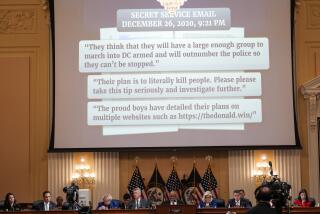Bush orders contingency plans for attack on U.S.
WASHINGTON — President Bush issued a formal national security directive Wednesday ordering agencies to prepare contingency plans for a surprise, “decapitating” attack on the federal government, and assigned responsibility for coordinating such plans to the White House.
The prospect of a nuclear bomb being detonated in Washington without warning, whether smuggled in by terrorists or a foreign government, has been cited by many security analysts as a rising concern since the Sept. 11, 2001, attacks.
The order makes explicit that the focus of federal worst-case planning involves a covert nuclear attack against the capital, in contrast with Cold War beliefs that a long-range strike would be preceded by a notice of minutes or hours as missiles were fueled and launched.
“As a result of the asymmetric threat environment, adequate warning of potential emergencies that could pose a significant risk to the homeland might not be available, and therefore all continuity planning shall be based on the assumption that no such warning will be received,” states the 72-paragraph order.
The statement added, “Emphasis will be placed upon geographic dispersion of leadership, staff, and infrastructure in order to increase survivability and maintain uninterrupted Government Functions.”
After the 2001 attacks, Bush assigned about 100 senior civilian managers to secretly rotate to locations outside of Washington for weeks or months at a time to ensure the nation’s survival, a shadow government that evolved based on long-standing “continuity of operations plans.”
Since then, other agencies including the Pentagon, the office of the Director of National Intelligence and CIA have taken steps to relocate facilities or key functions outside of Washington, citing factors such as economics or the importance of avoiding Beltway “group-think.”
More to Read
Sign up for Essential California
The most important California stories and recommendations in your inbox every morning.
You may occasionally receive promotional content from the Los Angeles Times.










